Find robust submersible hydrostatic level transmitters for accurate liquid level measurement in tanks, wells, and water monitoring. Features IP68 protection & various outputs.
Submersible liquid level sensors provide reliable and continuous level measurement by being fully immersed in the fluid. Operating on the hydrostatic principle, these robust probes measure the pressure exerted by the liquid column above them and convert it into a standard electrical signal for monitoring and control systems. Key design features include high-integrity IP68 sealing to prevent liquid ingress and specialized vented cables that compensate for atmospheric pressure changes, ensuring accurate readings in applications ranging from deep wells and storage tanks to wastewater processing and environmental monitoring.
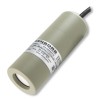 LMK809 Plastic Submersible Low Level Transmitter - IP68 low range pressure transmitter for measuring the level of highly contaminated and agressive liquid media with a body made from PP-HT or PVDF.
LMK809 Plastic Submersible Low Level Transmitter - IP68 low range pressure transmitter for measuring the level of highly contaminated and agressive liquid media with a body made from PP-HT or PVDF.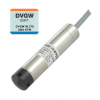 LMP307 Submersible Level Transmitter - Submersible level transmitter for measuring liquid level with a 4-20mA current loop or a 0-10V voltage output plus optional ATEX approval for intrinsically safe use in hazardous areas in ranges from 1mH2O up to 250mH2O. The LMP307 is suitable for use on potable water with no leaching, and can be supplied with a drinking water certificate according to DVGW and KTW.
LMP307 Submersible Level Transmitter - Submersible level transmitter for measuring liquid level with a 4-20mA current loop or a 0-10V voltage output plus optional ATEX approval for intrinsically safe use in hazardous areas in ranges from 1mH2O up to 250mH2O. The LMP307 is suitable for use on potable water with no leaching, and can be supplied with a drinking water certificate according to DVGW and KTW.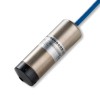 LMK458 Marine Approved Hydrostatic Level Transmitter - Marine approved level transmitter with 4-20mA output for measuring level of contents inside ship ballast, fuel, liquid cargo or wastewater tanks
LMK458 Marine Approved Hydrostatic Level Transmitter - Marine approved level transmitter with 4-20mA output for measuring level of contents inside ship ballast, fuel, liquid cargo or wastewater tanks 18.605 G Low Cost Submersible Diesel Fuel and Water Tank Level Sensor - Low cost OEM diesel fuel or water level sensor for installing inside or outside a storage tank.
18.605 G Low Cost Submersible Diesel Fuel and Water Tank Level Sensor - Low cost OEM diesel fuel or water level sensor for installing inside or outside a storage tank.  DCL 531 Modbus RTU RS 485 Submersible Stainless Steel Liquid Level Sensor - Digital submersible stainless steel liquid level sensor with a Modbus RTU protocol RS 485 serial bus interface.
DCL 531 Modbus RTU RS 485 Submersible Stainless Steel Liquid Level Sensor - Digital submersible stainless steel liquid level sensor with a Modbus RTU protocol RS 485 serial bus interface.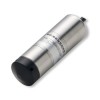 LMK382 Low Range IP68 Waste Water Level Transmitter - Submersible Low Range waste water level transmitter with intrinsically safe option for monitoring the level of sewage and effluent in water treatment plants.
LMK382 Low Range IP68 Waste Water Level Transmitter - Submersible Low Range waste water level transmitter with intrinsically safe option for monitoring the level of sewage and effluent in water treatment plants. LMK387 Cleanable Sewage and Sludge Pressure/Level Sensor - Rugged and easily cleanable pressure/level sensor for use with waste water sewage or sludge.
LMK387 Cleanable Sewage and Sludge Pressure/Level Sensor - Rugged and easily cleanable pressure/level sensor for use with waste water sewage or sludge.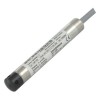 LMP305 Borehole Level Transmitter - Submersible stainless steel pressure transmitter ideal for geotechnical surveying with a 19mm diameter for measuring hydrostatic water level in bore-holes.
LMP305 Borehole Level Transmitter - Submersible stainless steel pressure transmitter ideal for geotechnical surveying with a 19mm diameter for measuring hydrostatic water level in bore-holes. DCL 551 RS485 Modbus RTU Submersible Low Range Fuel, Oil & Wastewater Level Probe - Low range digital interface submersible liquid level probe with RS 485 Modbus RTU protocol serial bus communications for measuring level of fuel, oil and wastewater in low fill height open tanks.
DCL 551 RS485 Modbus RTU Submersible Low Range Fuel, Oil & Wastewater Level Probe - Low range digital interface submersible liquid level probe with RS 485 Modbus RTU protocol serial bus communications for measuring level of fuel, oil and wastewater in low fill height open tanks.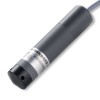 LMK807 Plastic Submersible Level Transmitter - IP68 mid range pressure transmitter for measuring the level of highly contaminated and aggressive liquid media with a body made from PP-HT.
LMK807 Plastic Submersible Level Transmitter - IP68 mid range pressure transmitter for measuring the level of highly contaminated and aggressive liquid media with a body made from PP-HT.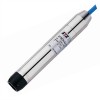 ATM/N Titanium Submersible Hydrostatic Pressure Transmitter - All Titanium submersible pressure transmitter for measuring the hydrostatic level of leachate, brackish water or sea water. Ranges from 1 up to 250mWC.
ATM/N Titanium Submersible Hydrostatic Pressure Transmitter - All Titanium submersible pressure transmitter for measuring the hydrostatic level of leachate, brackish water or sea water. Ranges from 1 up to 250mWC. LMK 806 Plastic 21mm diameter Submersible Level Probe - The chemical resistant LMK806 submersible level probe is designed for use in confined spaces with aggressive media.
LMK 806 Plastic 21mm diameter Submersible Level Probe - The chemical resistant LMK806 submersible level probe is designed for use in confined spaces with aggressive media.
Find out more about Submersible Liquid Level Sensors to determine which product options and capabilities will best meet your application requirements.
Submersible liquid level sensors, often referred to as hydrostatic level transmitters or probes, are specifically engineered for continuous immersion within the fluid being measured. Their fundamental operating principle relies on gauging the hydrostatic pressure generated by the liquid column directly above the sensor’s sensing diaphragm. This measured pressure is directly proportional to the liquid level, allowing for precise determination of the height of the fluid. These devices translate this pressure reading into a standardized electrical signal, commonly a 4-20mA loop-powered output, voltage signal (e.g., 0-5Vdc, 0-10Vdc), or digital formats like Modbus or SDI-12, facilitating seamless integration with programmable logic controllers (PLCs), data loggers, telemetry systems, and other process instrumentation.
The defining characteristic of these sensors is their robust construction, designed to withstand permanent submersion without liquid ingress compromising internal electronics or sensor elements. This necessitates high-integrity sealing, typically achieving an IP68 rating or higher, ensuring protection against continuous immersion under specified pressure conditions. Material selection is critical; sensor housings are commonly machined from corrosion-resistant materials such as 316L stainless steel or titanium for aggressive media, while diaphragm materials are chosen for compatibility with the specific fluid properties. Specialized polymers like PVDF or Hastelloy C276 might be employed for highly corrosive chemical applications.
A crucial design feature for most submersible gauge pressure level sensors is the specialized submersible cable. This cable not only transmits the electrical signal and power but also incorporates a vent tube running its length. This tube allows the ambient atmospheric pressure to be applied to the rear side of the sensing diaphragm. This barometric referencing ensures that the sensor accurately measures only the pressure exerted by the liquid column, automatically compensating for fluctuations in atmospheric pressure which would otherwise introduce errors in the level reading. The cable jacket material (e.g., Polyurethane (PUR), FEP, Hytrel) must be carefully selected for abrasion resistance, chemical compatibility with the measured fluid, and long-term flexibility, preventing cracking or degradation over time.
Proper installation is key to the longevity and accuracy of submersible level sensors. Considerations include protecting the sensor diaphragm from mechanical damage during deployment, especially in environments with high sediment loads or potential debris, often achieved using protective cages or installation within stilling tubes. Cable management is also vital; ensuring adequate strain relief prevents stress on the cable entry seal, and securing the cable avoids entanglement or abrasion. The atmospheric vent tube termination point, typically at the surface instrumentation enclosure, must be kept clean, dry, and unobstructed to ensure accurate gauge pressure referencing. Blockage or moisture ingress into the vent tube is a common cause of reading inaccuracies.
These sensors find widespread use across various industries and environmental monitoring applications. Common examples include level monitoring in water and wastewater treatment plants (e.g., lift stations, clarifiers, effluent channels), deep borehole and well water level gauging for groundwater resource management, fuel gauging in underground or surface storage tanks (requiring appropriate material compatibility and potentially intrinsic safety certifications for hazardous areas), level control in industrial process tanks containing chemicals or raw materials, monitoring ballast tank levels on marine vessels, and deployment in rivers, lakes, and reservoirs for hydrological studies and flood warning systems. The sensor’s ability to provide continuous, reliable level data while fully immersed makes it an indispensable tool in these demanding environments.
